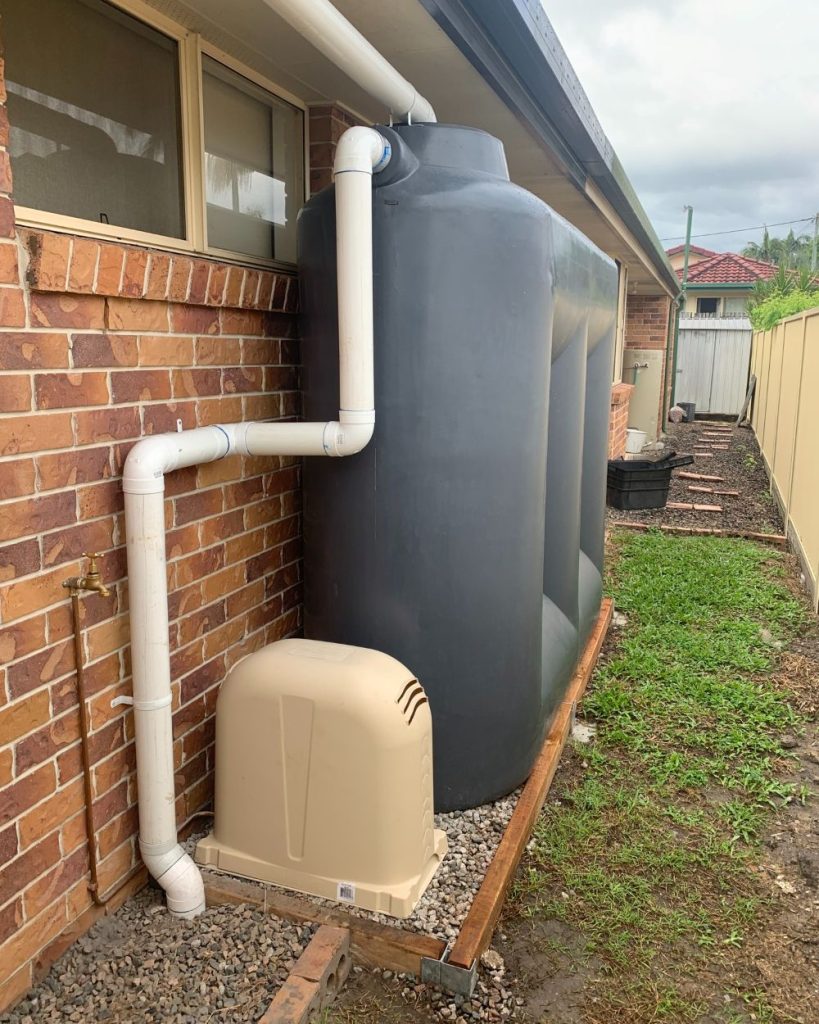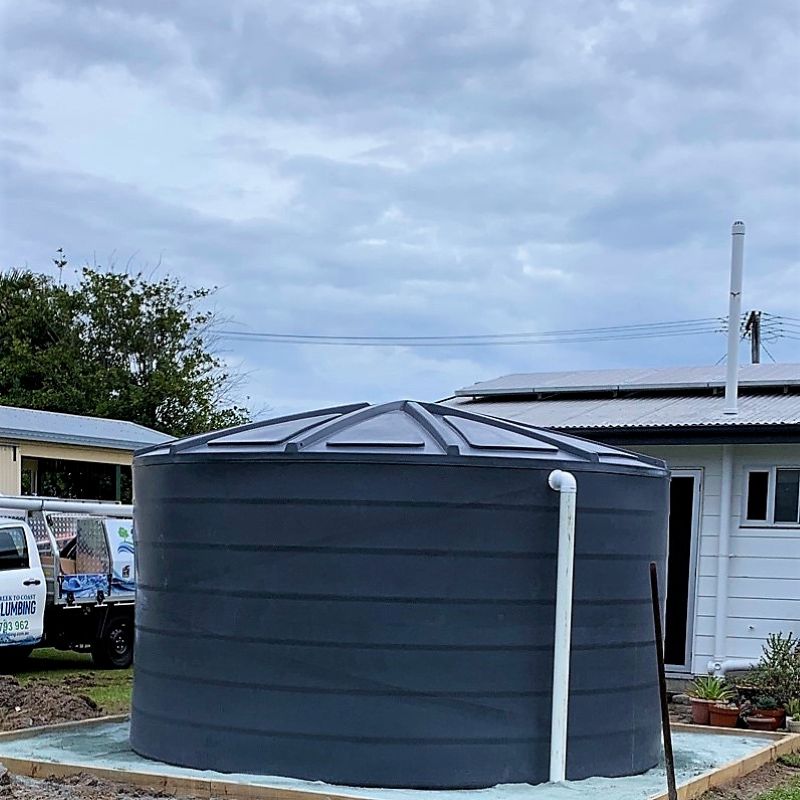Selecting the Perfect Rainwater Harvesting System for Your Lifestyle and Water Conservation Goals
In Queensland, more and more homeowners are turning to rainwater tanks as a proactive strategy to reduce utility bills, alleviate pressure on local water resources, and create drought-resilient properties. Before making a financial commitment to a rainwater tank, it is vital to address a fundamental question: What is your actual water requirement?
At Creek to Coast Plumbing, we specialize in assisting homeowners with the design of efficient rainwater harvesting systems, and determining the right tank size is an essential first step on this informative journey.

Maximize Your Rainwater Collection Capabilities Today
Evaluating your rainwater collection capabilities is the essential first step towards achieving effective water management in your home. This capability is determined by two key elements: the size of your roof area and the average annual rainfall experienced in your locality. Understanding these factors is crucial for the efficient planning of your rainwater harvesting system.
Consider the following specifics:
- Generally, for each square meter of roof area, you can expect to collect roughly 1 litre of water for every 1mm of rainfall.
- If your roof spans 200m² and your area receives 1,200mm of rainfall every year, you could potentially collect 240,000 litres annually.
However, it is crucial to recognize that this scenario represents an ideal condition. In practice, several factors such as the effectiveness of first flush systems, evaporation rates, the pitch of your roof, gutter design, and overflow situations can lead to water loss.
We typically suggest planning for a collection efficiency of 80–90% to account for these variables and ensure optimal performance.
How Do You Plan to Use the Harvested Rainwater?
At this juncture, practical considerations become vital. Are you collecting rainwater exclusively for your garden, or do you intend to utilize it for toilets, laundry, or even to supply your entire household?
Here are some critical factors to keep in mind:
Determining the Ideal Tank Size for Your Garden Irrigation Requirements
If your primary goal is to irrigate lawns, vegetable patches, or decorative plants, a small to mid-sized tank (2,000–5,000 litres) should suffice.
However, this largely depends on the scale of your garden and prevailing local rainfall patterns.
In areas where short, intense rain showers are common, larger tanks may be necessary to capture the maximum amount of rainwater during these downpours.
Utilizing Rainwater for Laundry and Toilet Applications: What You Need to Know
Households that utilize rainwater for toilets and washing machines often discover that 5,000–10,000 litre tanks offer notable benefits. These appliances typically account for about 35–40% of internal water consumption, resulting in significant cost savings over time.
It is essential to integrate a pump and suitable plumbing to connect these systems to your home. This is a service that Creek to Coast expertly manages as part of our comprehensive installation process.

Factors to Consider When Supplying Rainwater to Your Entire Home
If your goal is to achieve complete self-sufficiency or to provide rainwater to every faucet in your home, you will likely require 20,000 litres or more, depending on your household size. Larger tanks can also serve as a backup water supply for fire emergencies, during dry periods, or when accommodating guests.
How Many Residents Are in Your Household?
A helpful guideline suggests allocating around 150–250 litres per person per day when utilizing rainwater for general household needs.
- For a couple: a 5,000–10,000 litre tank is typically adequate.
- For families of four or more: consider 10,000–20,000 litres or larger to ensure a sufficient water supply.
The number of individuals in your home will directly impact how quickly your tank depletes, especially during dry spells when water conservation is paramount.
Is Your Roof Space Sufficient for Effective Rainwater Harvesting?
The size and design of your roof are pivotal in determining how much rainwater you can effectively collect.
A larger roof area allows for a greater capacity for water harvesting.
Additionally, the configuration of your roof is significant. If your home features multiple roof sections that can direct runoff into a single tank, we can design an effective downpipe system to maximize water capture from all available surfaces.
For smaller homes or townhouses, slimline or under-deck tanks may be the most appropriate choice, and Creek to Coast can assist in identifying the optimal solution tailored to your needs.

Essential Components: Tank Placement, Guttering, and Overflow Management Techniques
Successful rainwater harvesting involves much more than just the tank itself.
A well-structured system requires:
- Sturdy, well-maintained gutters to prevent clogs and blockages
- Leaf guards and first flush diverters to ensure water quality
- Overflow systems that safely redirect excess water away from your home’s foundation
- A stable, level tank base or stand to support the structure securely
Creek to Coast Plumbing provides complete rainwater system installations, including enhancements to gutters, pump connections, stormwater management, and filtration systems to ensure that your tank is secure and ready for use from day one.
How to Guarantee Cleaner and Safer Rainwater for Your Household
We highly recommend the installation of a whole-house rainwater filtration system, especially if you intend to use your harvested rainwater for more than just garden irrigation.
The Puretec Hybrid Plus systems, expertly fitted by our team, can effectively remove sediments, odors, tannins, bacteria, and also adjust the water’s pH to minimize copper leaching and pipe corrosion. Discover the numerous advantages of implementing water filtration for your harvested rainwater.
Making Informed and Smart Choices for Your Rainwater Tank Selection
Choosing a rainwater tank encompasses more than selecting the largest option available; it involves aligning your system with your roof size, the rainfall patterns in your area, and your specific water usage requirements.
At Creek to Coast Plumbing, we have been aiding Queensland homeowners in establishing sustainable rainwater systems for over three decades. From determining the perfect tank size and placement to complete guttering and filtration solutions, we are committed to ensuring that you maximize every precious drop of rainwater.
The Article: Choosing the Right Size Rainwater Tank for Your Queensland Home first appeared on https://writebuff.com
The Article Choosing the Right Size Rainwater Tank for Queensland Homes Was Found On https://limitsofstrategy.com





No responses yet